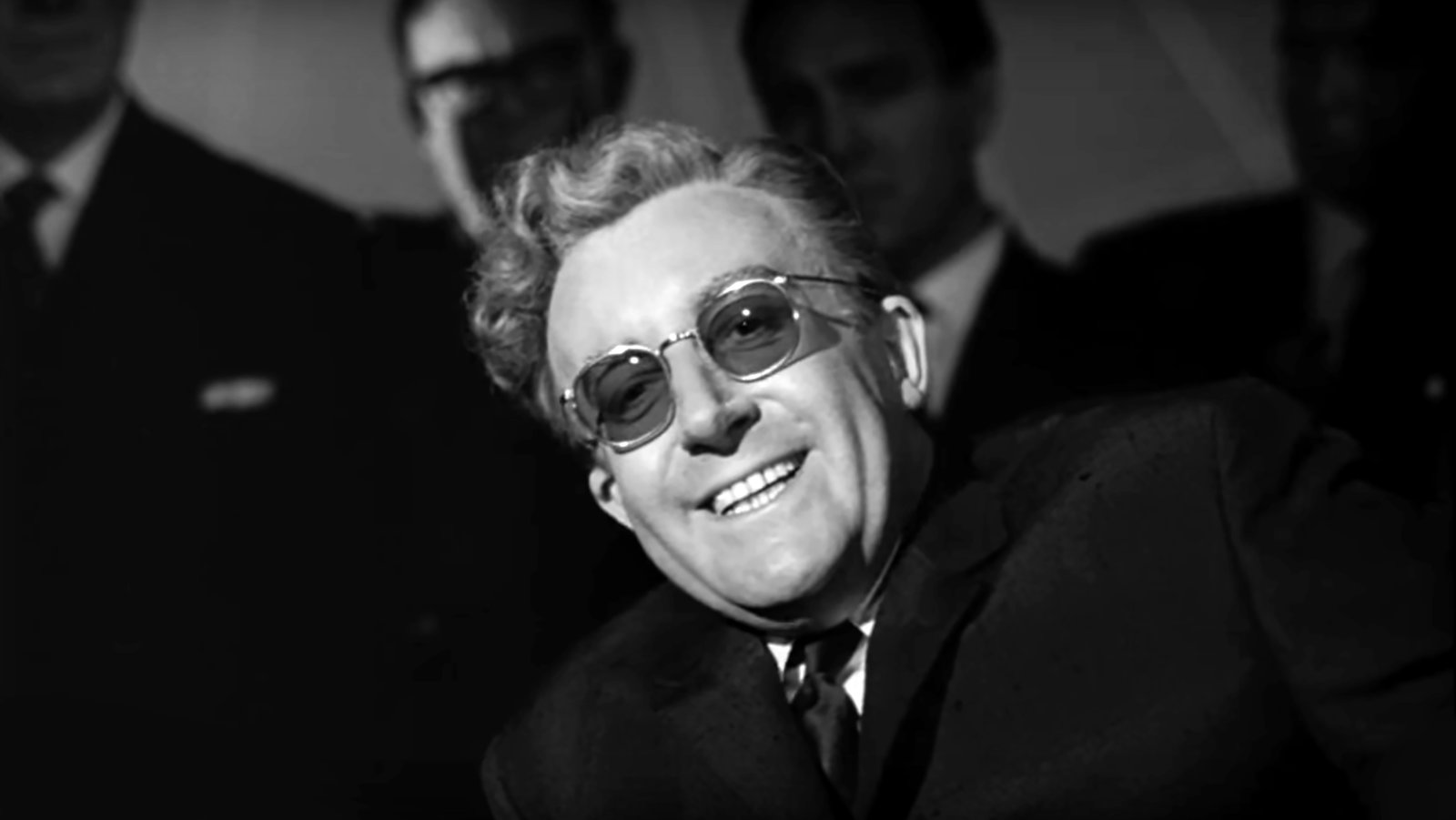
Stanley Kubrick’s classic black comedy, Dr. Strangelove or: How I Learned to Stop Worrying and Love the Bomb, remains a genius political satire.
This is a film that is surprisingly still relevant even some 20 years into the 21st century. Obviously, the film features one of the most iconic lines in cinema history but that’s beside the point. You could still make this film today.
There is a lot happening in the span of 94 minutes. Air Force Strategic Commander Jack D. Ripper (Sterling Hayden) is the ranking officer in command of the Burpelson Air Force Base. He gives the order to Group Captain Lionel Mandrake (Peter Sellers) to issue Wing Attack Plan R and put the base on alert. What this means is that there will be attacks on anybody approaching the base, even if they are also American. It’s the height of the Cold War and there’s no telling who could approach the base. In addition, all aircraft must shut down their communications–including the B-52 bomber piloted by Major T. J. “King” Kong (Slim Pickens). As soon as Mandrake realizes that there is no Pentagon order, Ripper locks him in the office. It’s certainly not going to end well.
While all this happening, General Buck Turgidson (George C. Scott) gets called into the office and takes his seat in the War Room. The general briefs President Merkin Muffley (Peter Sellers). He alerts the officials that only Ripper knows the CRM code that could abort the mission and recall the planes. When the president gives the order to storm the base, the general argues in favor of letting the attack continue. The president, however, chooses not to allow the United States to strike first. Instead, Soviet Ambassador Alexei de Sadeski (Peter Bull) is brought into the War Room before a call is made to Soviet Premier Dimitri Kissov. We only hear the president’s comments but the conversation is hysterical. However, the ambassador informs the president of the Doomsday machine. This only strengthens the resolve to figure this out.
All the doomsday talk brings Dr. Strangelove (Peter Sellers) into the talks. A former Nazi that came over during Operation Paperclip, he points out that mere idea of a Doomsday machine is moot if nobody knows about it. In classic comedic fassion, we learn that they would be making such an announcement. But enough talk about the plot.
Let’s talk about the cinematography for a moment. Gilbert Taylor’s cinematography is beautiful and stunningly glorious when watching on 4K Ultra HD. This film simply wouldn’t work in color. The war room especially wouldn’t be the same in color. In using a wide angle lens, the room itself appears larger than when it was shot. And again, the lighting is what makes this set work.
Stanley Kubrick is one of those filmmakers that you either love or hate. This is the same filmmaker behind an innovative sci-fi film in 2001: A Space Odyssey. But in Dr. Strangelove, Kubrick delivers what is arguably the greatest political satire of all time.
The film contains one of the best lines in cinematic history from President Muffley: “Gentleman, you can’t fight in here. This is the war room.” This line comes when General Turgidson is fighting with the Soviet ambassador.
“Perhaps it might be better, Mr. President, if you were more concerned with the American People than with your image in the history books,” General Turgidson tells the president. Does this line remind you of anyone? It just shows how much this film holds up since its 1964 theatrical release!
In terms of the acting, not many people can pull off playing three different roles in the same film. However, Peter Sellers accomplishes this very feat. He was almost tasked with playing a fourth character but this didn’t come to pass. Sellers certainly earned the Oscar nomination but unfortunately, he didn’t win.
Even though Dr. Strangelove or: How I Learned to Stop Worrying and Love the Bomb was written for another era, it could still be made today.
DIRECTOR: Stanley Kubrick
SCREENWRITERS: Stanley Kubrick & Peter George & Terry Southern
CAST: Peter Sellers, George C. Scott, Sterling Hayden, Keenan Wynn, Slim Pickens, and Tracy Reed
Columbia Pictures opened Dr. Strangelove or: How I Learned to Stop Worrying and Love the Bomb in theaters on January 29, 1964. Grade: 5/5
Please subscribe to Solzy at the Movies on Buttondown.





